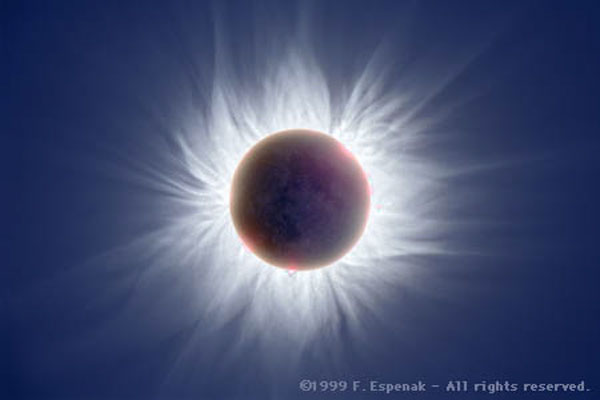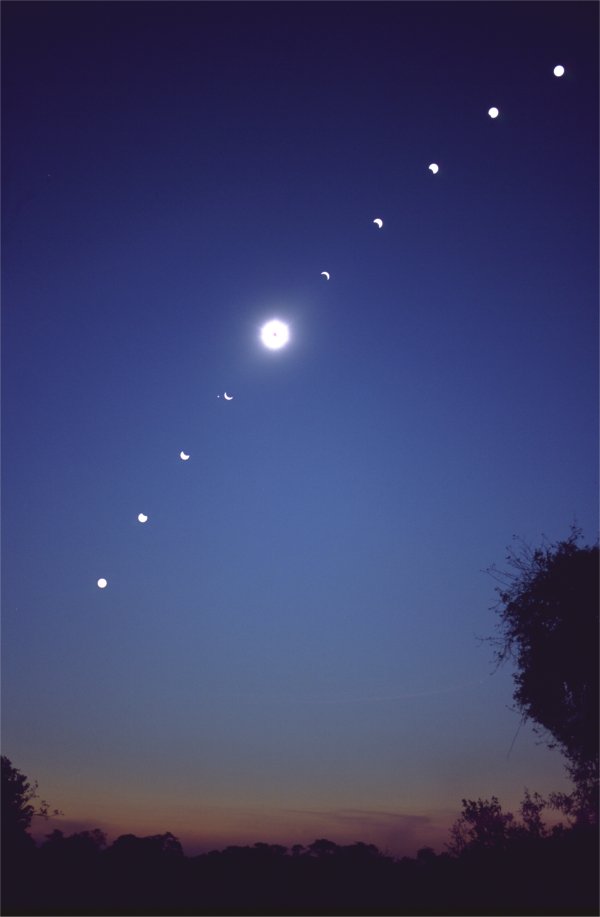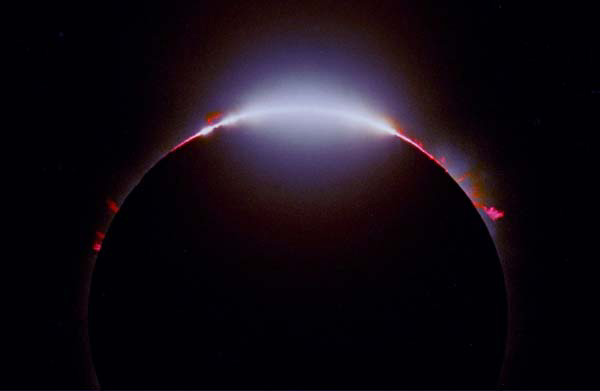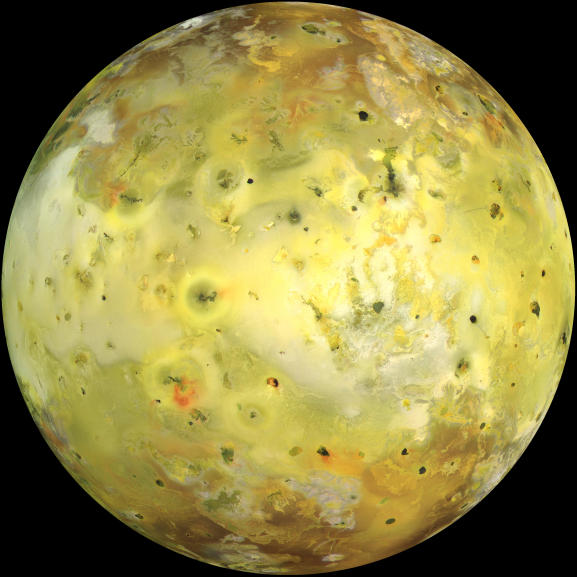Stars, Planets & Moons
Most pics courtesy of NASA
Sagittarius Star Cloud


Explanation: Stars come in all different colors. The color of a star indicates its surface temperature, an important property used to assign each star a spectral type. Most stars in the above Sagittarius Star Cloud are orange or red and relatively faint, as our Sun would appear. The blue and greenish stars are hotter, many being relatively young and massive. The bright red stars are cool Red Giants, bloated stars once similar to our Sun that have entered a more advanced stage of evolution. Stars of this Sagittarius Cloud lie towards the center of our Galaxy - tantalizing cosmic jewels viewed through a rift in the dark, pervasive, interstellar dust. This famous stellar grouping houses some of the oldest stars known.

Explanation: Stars like the Sun use hydrogen for fuel, "burning" hydrogen into helium at their cores through nuclear fusion. But what happens when that hydrogen runs out? For a while, hydrogen burns in a shell surrounding the stellar core and the star expands to become a red giant. The bright reddish-orange stars in this beautiful two-color composite picture of the old globular star cluster M10 are examples of this phase of stellar evolution. Yet the bright blue stars apparent in M10 have evolved beyond the simple, hydrogen shell burning stage. These stars have become "horizontal branch" giants with core temperatures hot enough to burn helium into carbon. In this image, only the barely visible, faint, gray-looking stars are likely to still be burning hydrogen at their cores.

Explanation: Most photographs don't adequately portray the magnificence of the Sun's corona. Seeing the corona first-hand during a total solar eclipse is best. The human eye can adapt to see features and extent that photographic film usually cannot. Welcome, however, to the digital age. The above picture is a combination of twenty-two photographs that were digitally processed to highlight faint features of a total eclipe that occurred in August of 1999. The outer pictures of the Sun's corona were digitally altered to enhance dim, outlying waves and filaments. The inner pictures of the usually dark Moon were enhanced to bring out its faint glow from doubly reflected sunlight. Shadow seekers need not fret, though, since as yet there is no way that digital image processing can mimic the fun involved in experiencing a total solar eclipse. The next total solar eclipse will be visible from parts of South American and Africa on June 21.

Explanation: Yesterday, for a brief few minutes, a total eclipse of the Sun brought darkness to southern Africa's daytime skies. During this first total solar eclipse of the third millennium webcast sites were swamped, but sun-watchers along the eclipse path enjoyed clear weather and reported fantastic views. Enthusiastic astrophotographer Olivier Staiger recorded these pictures during the eclipse's total phase from Lusaka, Zambia. The large image above shows the Sun's tantalizing inner corona with telltale pinkish prominences around the solar limb, while the inset at the lower right reveals the spiky outer corona. But the inset also captures another celestial beacon sharing the eclipse-darkened heavens, the bright planet Jupiter shinning at the lower left. The next total solar eclipse will be on 2002 December 4 ... again in southern African skies.

Explanation: What's that dark spot on the Sun? It's the Moon. Last month, on June 21, a total solar eclipse was visible in parts of Africa. In one of the most spectacular records of this eclipse, Cees Bassa captured the setting Sun being eclipsed in a series of multiple exposures from Malambanyama, Zambia. All of the images were taken 20 minutes apart, and all but the central image were taken though a dark solar filter. Without the filter, the central image features the enormous flowing corona that surrounds the Sun. The planet Jupiter can be seen superposed just to the left of the next image after totality.

Explanation: When the Moon's shadow reached out and touched Earth's southern hemisphere on 2001 June 21, the first total solar eclipse of the 21st century began. Starting in the Atlantic, the dark, central lunar shadow or umbra traced a path which crossed southern Africa and the large island of Madagascar before ending at sunset in the Indian Ocean. Of course, as the lunar disk blocked the Sun the total phase offered splendid views of the ellusive outer solar corona. But, as seen in this stunning telescopic view from southern Madagascar, it also revealed an active solar limb bristling with pinkish, planet-sized prominences. Taken as totality began, this image of the last bright rays of sunlight shining through dips and valleys in irregular lunar terrain gives the illusion of a glittering jewel set in a pink celestial ring.

Explanation: From pole to pole, from east to west, this is all of Mars. The above picture was digitally reconstructed from over 200 million laser altimeter measurements taken by the Mars Global Surveyor spacecraft currently orbiting Mars. The image strips Mars of its clouds and dust, and renders the whole surface visible simultaneously in its true daytime color. Particularly notable are the volcanoes of the Tharsis province, visible on the left, which are taller than any mountains on Earth. Just to the left of center is Valles Marineris, a canyon much longer and deeper Earth's Grand Canyon. On the right, south of the center, is the Hellas Planitia, a basin over 2000 kilometers wide that was likely created by a collision with an asteroid. Mars has many smooth lowlands in the north, and many rough highlands in the south. Mars has just passed its closest approach to Earth since 1988 and can be seen shining brightly in the evening sky.

Explanation: The strangest moon in the Solar System is bright yellow. This picture, showing Io's true colors, was taken in July, 1999 by the Galileo spacecraft currently orbiting Jupiter. Io's colors derive from sulfur and molten silicate rock. The unusual surface of Io is kept very young by its system of active volcanoes. The intense tidal gravity of Jupiter stretches Io and damps wobbles caused by Jupiter's other Galilean moons. The resulting friction greatly heats Io's interior, causing molten rock to explode through the surface. Io's volcanoes are so active that they are effectively turning the whole moon inside out. Some of Io's volcanic lava is so hot it glows in the dark.
|